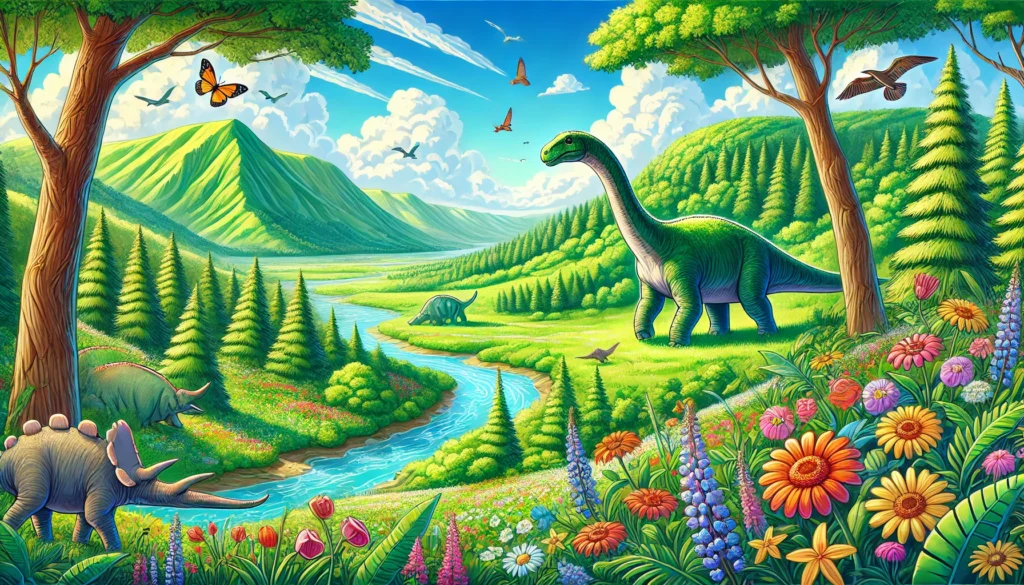
A Jurassic-era story about a Dinosaur
Picture yourself as a paleontologist investigating the Jurassic-era rocks in Utah. You stumble upon the remains of a massive herbivorous dinosaur measuring 20 meters in length and weighing 20 tons. Now, ponder this: How could such a creature reach such enormous size? According to science writer and paleontologist Riley Black, the key to this lies in the availability of plants.
Centering on plants, Black skillfully employs scientific insights to bring to life ancient environments inhabited by some of our beloved prehistoric creatures. Each chapter is structured as a vignette, accompanied by an appendix that clarifies the scientific concepts underpinning Black’s narrative decisions, showcasing a distinct time and setting.
When the Earth was Completely Green
In the opening chapter of “When the Earth Was Green”, which takes place in Arctic Canada 1.2 billion years ago, the environment lacks forests, fish, and seashells. The landscape consists of bare rock adorned with snow-covered mountains, overlooking oceans filled with sediments housing mats of cyanobacteria and mostly unicellular life forms. Against this setting, Black describes an organism that is not quite a plant—it’s a multicellular, photosynthesizing red alga. She notes that this moment marks the beginning of single cells coming together and forming new, unexpected structures. This evolutionary advancement is crucial to our existence today.
This red alga and its photosynthetic relatives are the forebears of the initial plants that moved onto land, unknowingly attracting creatures from the ocean. “It was the plants, rather than the fleshy-finned fish, that transformed the world when they emerged onto land,” Black notes.
Paleontology is frequently presented as narratives of colonization and domination—life took over the land, and dinosaurs ruled the Mesozoic Era. Black dismisses this perspective, opting instead to weave stories of communities into an “evolutionary romance.” She emphasizes that “we did not get here alone, but through an ongoing connection with the plant world.” A dinosaur, on its own, is merely a dinosaur.